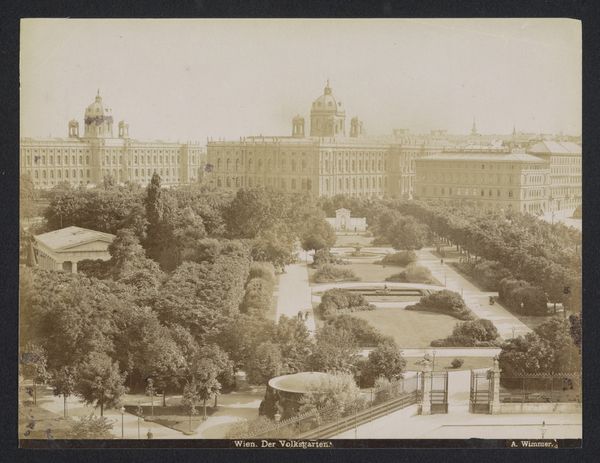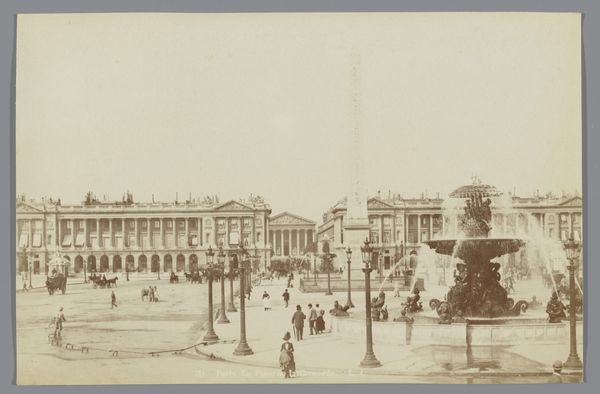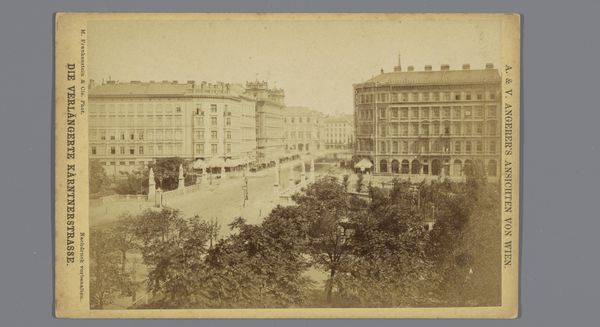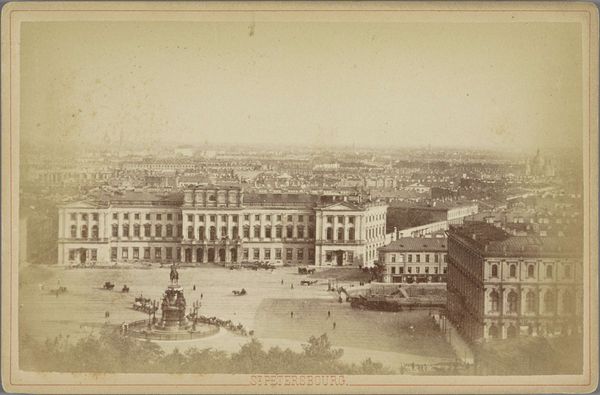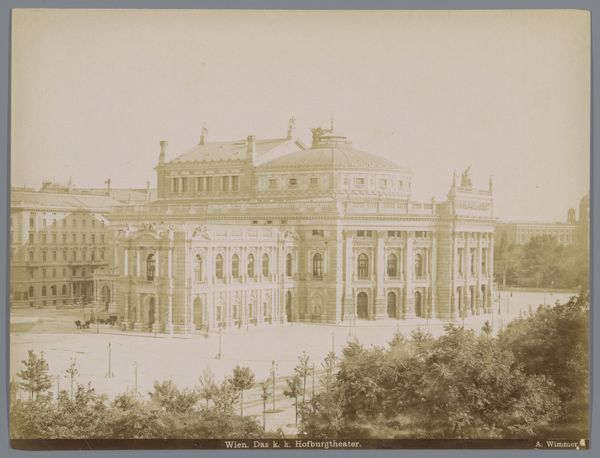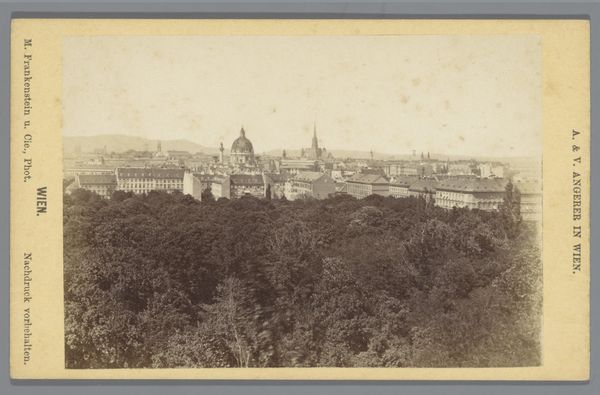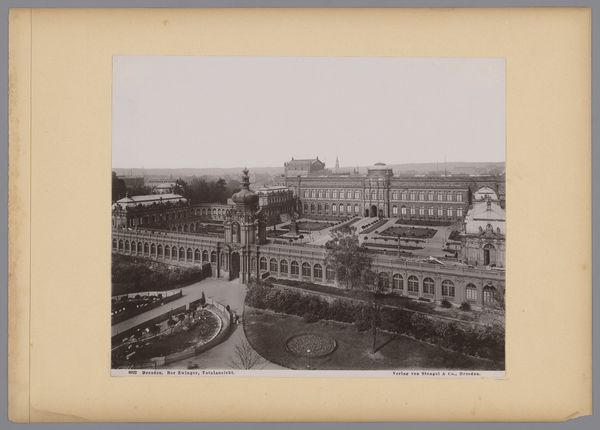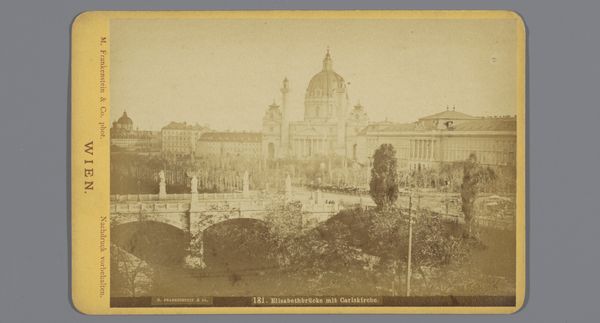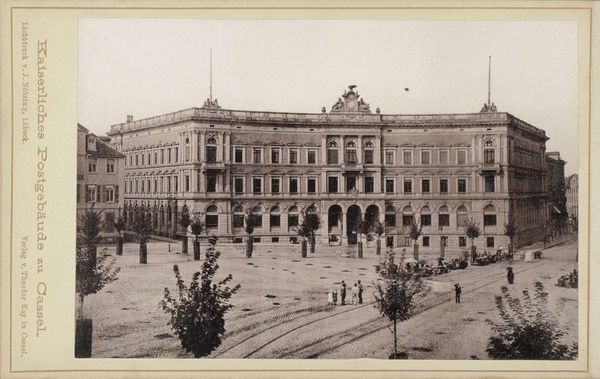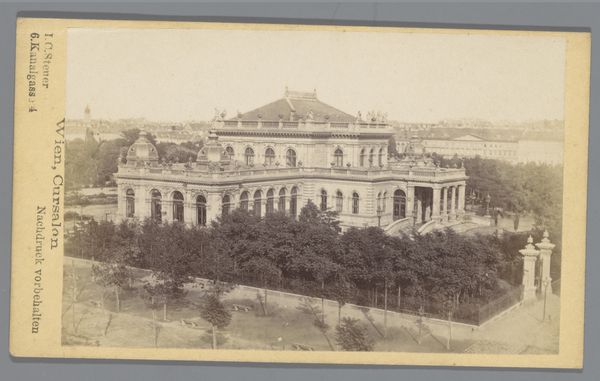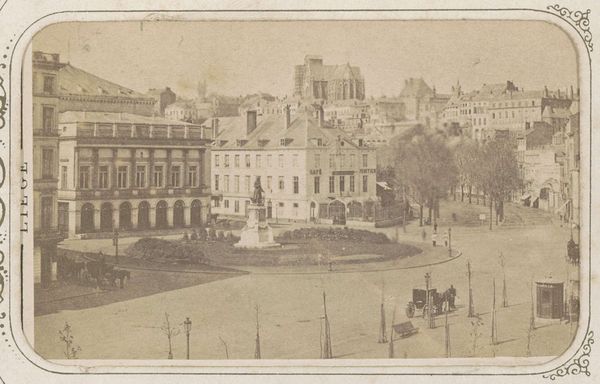
print, photography, albumen-print
#
statue
# print
#
neo-impressionism
#
landscape
#
photography
#
19th century
#
park
#
cityscape
#
albumen-print
#
statue
Dimensions: height 163 mm, width 206 mm
Copyright: Rijks Museum: Open Domain
Curator: Here we have an albumen print by Friedrich Albert Schwartz, titled "Gezicht op de Belle-Alliance-Platz in Berlin," dating back to 1898. Editor: It possesses such a dreamlike quality, doesn't it? The soft gradations of light, almost blurring the edges of the architectural forms, evoke a feeling of suspended time. Curator: Indeed. And consider the material process here; the use of the albumen print—a process utilizing egg whites—allowed for an impressive tonal range. Look closely at how Schwartz captures the hustle of a developing city and public space with the medium’s specific material limitations. Editor: Focusing on form, I see how the composition establishes a visual hierarchy. The statue centrally placed anchors the gaze, around which Schwartz carefully balances the mass of the buildings, creating both depth and symmetry. Curator: Note too, that the Belle-Alliance-Platz wasn’t merely an urban space. It served as a memorial to the Battle of Belle Alliance—Waterloo as it’s known to the British—thus constantly negotiating ideas around national pride, memory, and German expansion at a moment of seismic social change and massive industrialization. Editor: Quite. And structurally, this context amplifies the photographic contrast between the hard permanence of those memorial structures and the soft transience suggested by the figures populating the park, giving them heightened meaning within their era's semiotic system. Curator: It brings into focus the production of civic identity through the convergence of material production of space and photography’s own mechanics of creating meaning and collective understanding of that space in society. This artwork and its photographic reproduction shaped how Berlin was perceived, by Germans, by others, by history. Editor: Absolutely. Returning to a purely visual assessment, this piece ultimately compels a certain degree of quiet contemplation, doesn't it? One can almost hear the distant sounds of the city muted by time. Curator: Precisely, an apt testament to both Berlin's past and how that past was materially fabricated through the art-making of photography. Editor: It has definitely expanded how I understand not just this photograph but turn-of-the-century Berlin overall.
Comments
No comments
Be the first to comment and join the conversation on the ultimate creative platform.
